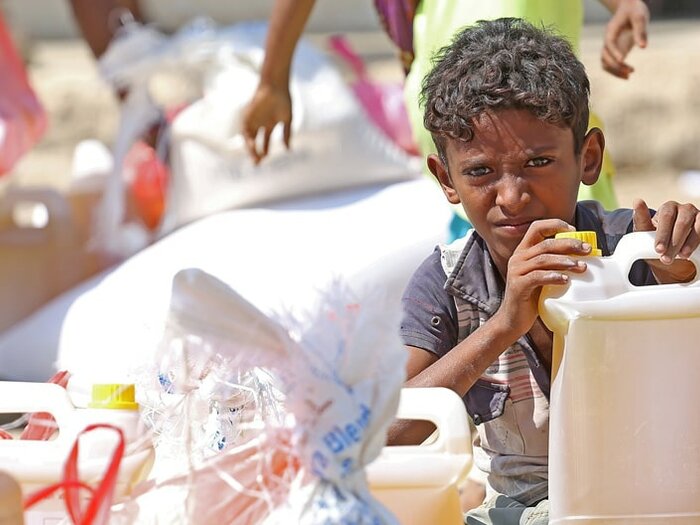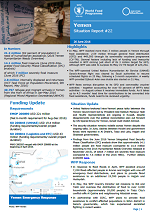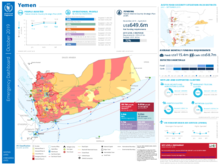Emergency
Yemen emergency
- 21.6 million
- people in need of humanitarian assistance in 2023
- 17 million
- people are food insecure
- 3.5 million
- pregnant/breastfeeding women and children under 5 are suffering from acute malnutrition
Aiming to reach 15 million of the most vulnerable people with emergency food assistance in 2023, WFP’s emergency response in Yemen is our largest anywhere in the world.
The current level of hunger in Yemen is unprecedented and is causing severe hardship for millions of people. Despite ongoing humanitarian assistance, 17 million Yemenis are food insecure.
The rate of child malnutrition is one of the highest in the world and the nutrition situation continues to deteriorate. A recent survey showed that almost one third of families have gaps in their diets, and hardly ever consume foods like pulses, vegetables, fruit, dairy products or meat. Malnutrition rates among women and children in Yemen remain among the highest in the world, with 1.3 million pregnant and breastfeeding women and 2.2 million children under 5 requiring treatment for acute malnutrition.
The humanitarian situation in Yemen is extremely fragile and any disruption in the pipeline of critical supplies such as food, fuel and medicines has the potential to bring millions of people closer to starvation and death. WFP calls for unimpeded access to reach those most in need and avert famine.
What the World Food Programme is doing to respond to the Yemen emergency
-
Food assistance
-
In 2023, WFP aims to provide 15 million people with emergency food assistance as in-kind rations of flour, pulses, oil, sugar, salt, or voucher or cash to purchase the same quantity of food.
-
Cash assistance
-
WFP is expanding cash assistance in areas of Yemen where markets are stable enough to provide for communities’ basic food needs. To support this programme WFP is registering beneficiaries on a new biometric platform. Through this system, people receive cash equal to the value of the food basket provided to families, which will inject much-needed liquidity into the economy. Much higher food prices in the south versus the north of Yemen means the cash amount is different.
-
Nutrition assistance
-
In response to high acute, moderate and severe malnutrition rates among children and women, WFP aims to provide nutritional support to 4.3 million pregnant and breastfeeding women and children under 5 in 2023.
-
School feeding
-
WFP aims to provide daily nutritious snacks – either date bars or high energy biscuits – to 3.2 million school children in 2023. The programme focuses on areas that have been hard hit by conflict, leading to low levels of school attendance and poor food security.
-
Logistics
-
The WFP-managed UN Humanitarian Air Service (UNHAS) continues to transport humanitarian aid workers between five key hubs in Yemen and the region. In addition, the Logistics Cluster facilitates regular sea and air transport for humanitarian cargo between Aden, Hodeidah, Sana’a and Djibouti.



